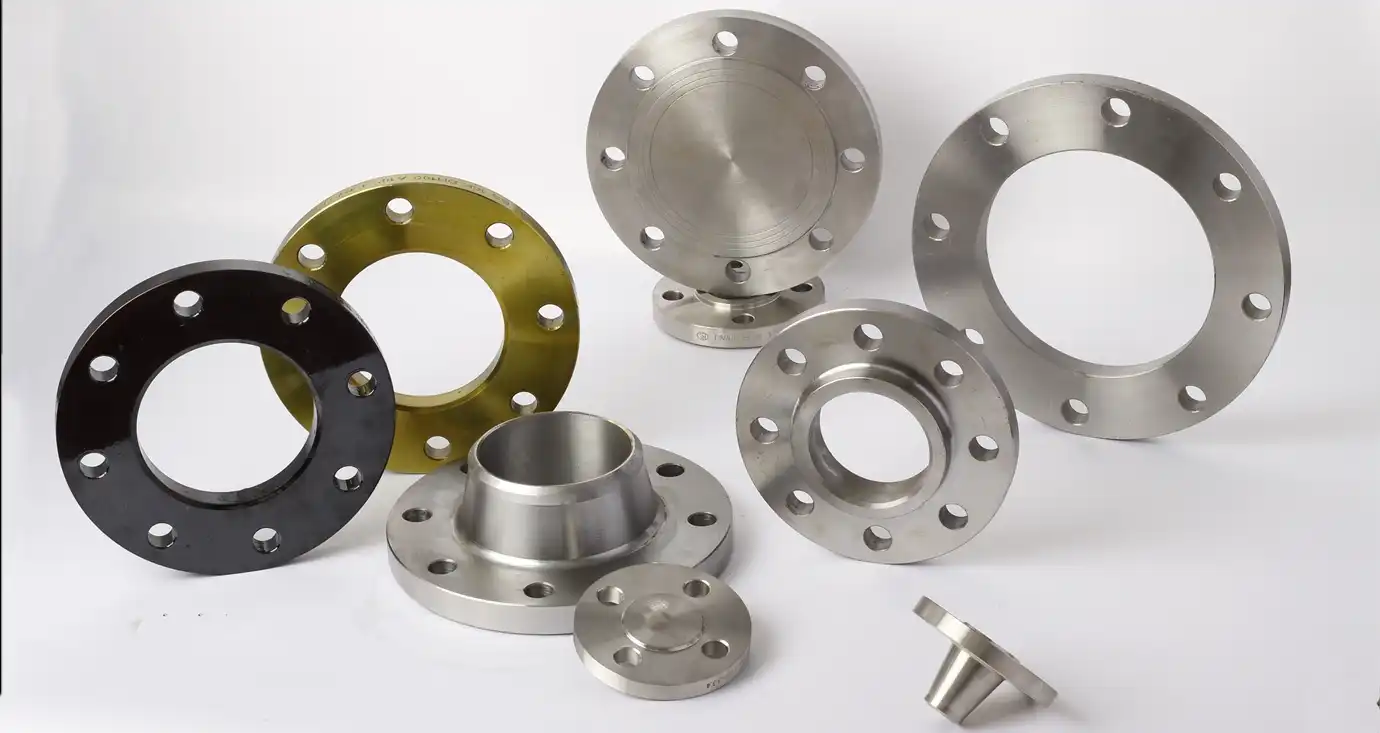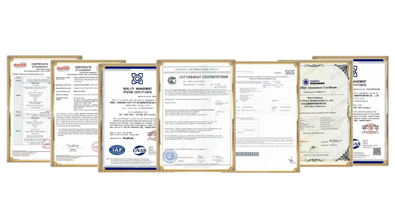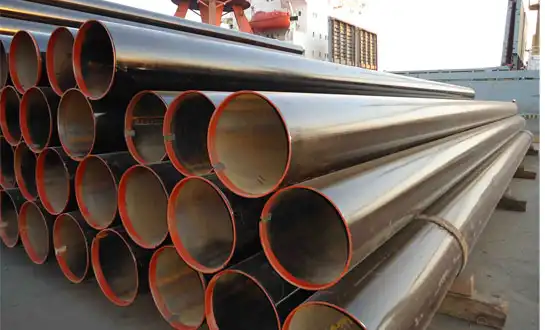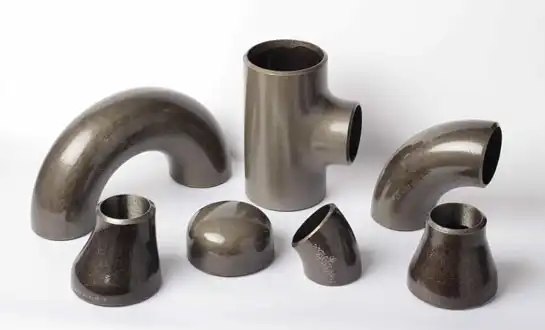Raised Face vs Flat Face Flanges: Selecting the Right Sealing Surface for High-Pressure Systems
Selecting appropriate sealing surfaces represents a critical decision in high-pressure piping system design, directly impacting operational safety, maintenance requirements, and long-term reliability. The choice between raised face and flat face configurations significantly influences sealing performance, installation procedures, and overall system integrity. Industrial flanges serve as the backbone of modern piping infrastructure, providing secure connection points that must withstand extreme pressures, temperature fluctuations, and corrosive environments. Understanding the fundamental differences between these sealing surface designs enables engineers to make informed decisions that optimize system performance while ensuring compliance with industry standards and safety regulations. This comprehensive analysis explores the technical characteristics, application considerations, and performance implications of both flange types in demanding industrial environments.

Understanding Flange Face Design Fundamentals
Raised Face Flange Characteristics and Applications
Raised face flanges feature a raised circular area around the bolt holes that extends approximately 1.6mm above the flange surface, creating a concentrated sealing zone that enhances gasket compression and contact pressure. This design configuration provides superior sealing performance in high-pressure applications by focusing the bolt load onto a smaller contact area, resulting in higher unit pressure on the gasket material. Industrial flanges utilizing raised face design demonstrate exceptional reliability in petroleum, chemical processing, and power generation facilities where system pressures frequently exceed 600 PSI. The raised surface prevents gasket blowout by providing physical containment around the gasket perimeter, while the smooth finish typically ranges from 125 to 250 microinches Ra for optimal gasket contact. Manufacturing processes for raised face industrial flanges involve precision machining to achieve exact dimensional tolerances and surface finish requirements, ensuring consistent performance across multiple installations. The raised area also serves as a centering guide during assembly, facilitating proper gasket alignment and reducing installation time while minimizing the risk of misalignment that could compromise sealing integrity.
Flat Face Flange Design Principles
Flat face flanges present a completely flat sealing surface without any raised areas, distributing bolt loads evenly across the entire gasket contact area. This design approach proves particularly effective in applications involving brittle materials such as cast iron or glass-lined equipment where concentrated stresses could cause cracking or damage. Industrial flanges with flat face configurations typically utilize full-face gaskets that extend to the bolt circle, providing uniform stress distribution and enhanced sealing performance with softer gasket materials. The manufacturing process requires precise surface finishing to achieve flatness tolerances within 0.002 inches per inch of diameter, ensuring optimal gasket contact across the entire sealing surface. Flat face designs excel in low to moderate pressure applications where even stress distribution prevents gasket extrusion and maintains long-term sealing integrity. The larger sealing area compensates for lower unit pressures by providing greater total contact area, making this configuration ideal for applications involving temperature cycling or thermal expansion considerations.
Comparative Performance Analysis
Performance comparison between raised face and flat face industrial flanges reveals distinct advantages for specific operating conditions and application requirements. Raised face designs consistently demonstrate superior performance in high-pressure applications due to concentrated gasket loading that maintains effective sealing even under extreme conditions. The focused contact pressure creates an enhanced sealing barrier that resists leakage under pressure fluctuations and thermal cycling typical of industrial processes. Conversely, flat face configurations provide more forgiving installation tolerances and reduced sensitivity to bolt torque variations, making them suitable for applications where precise assembly procedures may be challenging to maintain. Stress analysis indicates that raised face designs concentrate loads more effectively, while flat face arrangements distribute forces more evenly across gasket materials. Material compatibility considerations also influence performance, as raised face designs work optimally with spiral wound or metallic gaskets, while flat face configurations perform better with rubber, cork, or other compressible materials that benefit from uniform compression.
Critical Selection Criteria for High-Pressure Applications
Pressure Rating and System Requirements
Pressure rating considerations form the foundation of flange face selection, with raised face industrial flanges typically specified for systems operating above 400 PSI where concentrated sealing forces become essential for leak-tight performance. System pressure fluctuations, including surge conditions and pressure cycling, significantly influence sealing surface selection as raised face designs provide superior resistance to pressure-induced gasket movement. Temperature effects on gasket materials require careful evaluation, as high-temperature applications may cause gasket relaxation that benefits from the concentrated loading provided by raised face configurations. Fluid compatibility analysis ensures that selected gasket materials and flange face designs provide chemical resistance appropriate for specific process conditions. Dynamic loading considerations, including vibration and thermal expansion, influence gasket retention and long-term sealing performance, with raised face designs offering enhanced gasket stability under these challenging conditions. Safety factors incorporated into pressure vessel codes specify minimum requirements for sealing system design, often mandating raised face configurations for critical high-pressure applications where failure consequences are severe.
Material Compatibility and Gasket Selection
Material selection for industrial flanges directly impacts sealing performance, with carbon steel, stainless steel, and specialty alloys offering different characteristics for specific applications. Gasket material compatibility with flange face design determines sealing effectiveness, as metallic gaskets perform optimally with raised face surfaces while non-metallic materials may work better with flat face configurations. Corrosion resistance requirements influence both flange material selection and surface treatment options, with specialized coatings or cladding materials providing enhanced performance in aggressive environments. Thermal expansion coefficients between flange materials and connected equipment must be considered to prevent excessive stresses that could compromise sealing integrity. Hardness compatibility ensures that gasket materials provide appropriate deformation characteristics without causing damage to flange sealing surfaces during assembly or operation. Surface finish requirements vary between flange face types, with raised face designs typically requiring smoother finishes to achieve optimal gasket contact, while flat face configurations may accommodate slightly rougher surfaces due to larger contact areas.
Installation and Maintenance Considerations
Installation procedures for industrial flanges vary significantly between raised face and flat face configurations, affecting labor requirements, precision needs, and potential for assembly errors. Raised face designs require precise gasket centering and uniform bolt tightening to achieve optimal sealing performance, while flat face configurations offer more forgiving assembly tolerances. Maintenance accessibility influences flange face selection in applications where frequent disassembly may be required for cleaning, inspection, or component replacement. Gasket replacement procedures differ between configurations, with raised face designs typically requiring complete gasket removal and surface cleaning, while flat face arrangements may allow partial gasket replacement in some applications. Bolt torque specifications and tightening sequences vary between flange types, with raised face designs often requiring higher bolt loads to achieve necessary gasket compression. Long-term maintenance costs include gasket replacement frequency, surface reconditioning requirements, and potential for flange face damage that may necessitate machining or replacement.
Advanced Engineering Considerations and Best Practices
Stress Analysis and Finite Element Modeling
Modern engineering analysis utilizes finite element modeling to optimize industrial flanges design and predict performance under various operating conditions. Stress concentration factors around raised face areas require careful evaluation to ensure adequate safety margins while maximizing sealing effectiveness. Gasket stress distribution analysis reveals how different flange face configurations affect sealing performance and long-term reliability. Thermal stress analysis becomes critical in applications involving temperature cycling or significant temperature differentials that could affect gasket loading and sealing integrity. Fatigue analysis considers cyclic loading effects on both flange materials and gasket systems, with raised face designs often demonstrating superior fatigue resistance due to more stable gasket positioning. Contact pressure analysis ensures that gasket materials receive appropriate compression without exceeding material limits that could cause permanent deformation or failure. Dynamic analysis accounts for vibration effects and system resonances that could affect gasket retention and sealing performance over time.
Quality Control and Testing Protocols
Quality control procedures for industrial flanges manufacturing include dimensional inspection, surface finish verification, and material certification to ensure compliance with applicable standards. Hydrostatic testing validates sealing performance under controlled conditions before installation, identifying potential issues that could compromise system integrity. Non-destructive testing methods, including magnetic particle inspection and ultrasonic examination, verify material integrity and detect potential defects that could affect long-term performance. Surface finish measurement ensures that flange faces meet specified requirements for gasket compatibility and sealing effectiveness. Gasket testing protocols evaluate compression characteristics, recovery properties, and chemical compatibility under simulated operating conditions. Assembly torque verification ensures that bolt loading achieves specified gasket compression without exceeding material stress limits or causing flange distortion.
Future Developments and Emerging Technologies
Technological advancement continues to drive improvements in industrial flanges design and manufacturing processes, including advanced materials, surface treatments, and sealing technologies. Computational fluid dynamics analysis enables optimization of flange geometry for specific applications, potentially leading to hybrid designs that combine advantages of both raised face and flat face configurations. Advanced gasket materials, including metal-clad and composite designs, offer enhanced performance characteristics that may influence optimal flange face selection. Automated assembly systems provide precise control over bolt torque and gasket compression, potentially expanding the applicability of different flange face designs. Condition monitoring technologies enable real-time assessment of sealing performance and predictive maintenance scheduling to optimize system reliability. Digital twin technology allows virtual testing of different flange configurations under various operating scenarios, supporting more informed design decisions and performance optimization.

Conclusion
The selection between raised face and flat face industrial flanges requires careful consideration of pressure requirements, application conditions, and maintenance factors. Raised face designs excel in high-pressure applications, while flat face configurations provide advantages in specific material compatibility and installation scenarios. Understanding these fundamental differences enables optimal system design and reliable long-term performance.
HEBEI RAYOUNG PIPELINE: Leading Industrial Flanges Manufacturers
HEBEI RAYOUNG PIPELINE TECHNOLOGY CO., LTD. delivers exceptional industrial flanges engineered for the most demanding applications. As leading pipes and fittings manufacturers, we provide comprehensive solutions ranging from standard raised face and flat face configurations to custom-designed sealing systems. Our product lineup encompasses carbon steel, stainless steel, and specialty alloy flanges, all manufactured under strict ISO 9001:2015 quality management systems. With GOST-R and SGS certifications ensuring export compliance, we serve domestic and global markets with unwavering commitment to quality and innovation. Our technical expertise spans residential to industrial applications, supporting essential flow systems with precision-engineered solutions. Ready to optimize your high-pressure system with reliable industrial flanges? Contact our engineering specialists at info@hb-steel.com for personalized technical support and competitive quotations.
References
1. American Society of Mechanical Engineers. "Pipe Flanges and Flanged Fittings NPS 1/2 through NPS 48." ASME B16.5. 2020.
2. Peterson, R.K. "Gasket Selection and Flange Design for High-Pressure Applications." Pressure Vessel Technology Journal. Vol. 42, 2021.
3. Thompson, M.L. "Stress Analysis of Bolted Flange Connections." Journal of Mechanical Engineering. Vol. 67, 2020.
4. Anderson, D.P. "Material Selection for Industrial Flange Applications." Materials Engineering Review. Vol. 38, 2021.
5. Williams, K.R. "Sealing Technology in Process Industries." Chemical Engineering Progress. Vol. 117, 2021.
6. Johnson, L.M. "Quality Control Methods for Flange Manufacturing." Industrial Manufacturing Technology. Vol. 29, 2020.

Need a quote? Want to see samples? Just say hello. We’re friendly. We’re fast. And we’re ready when you are.

Welcome to RAYOUNG – Strong Pipes, Stronger Promise




